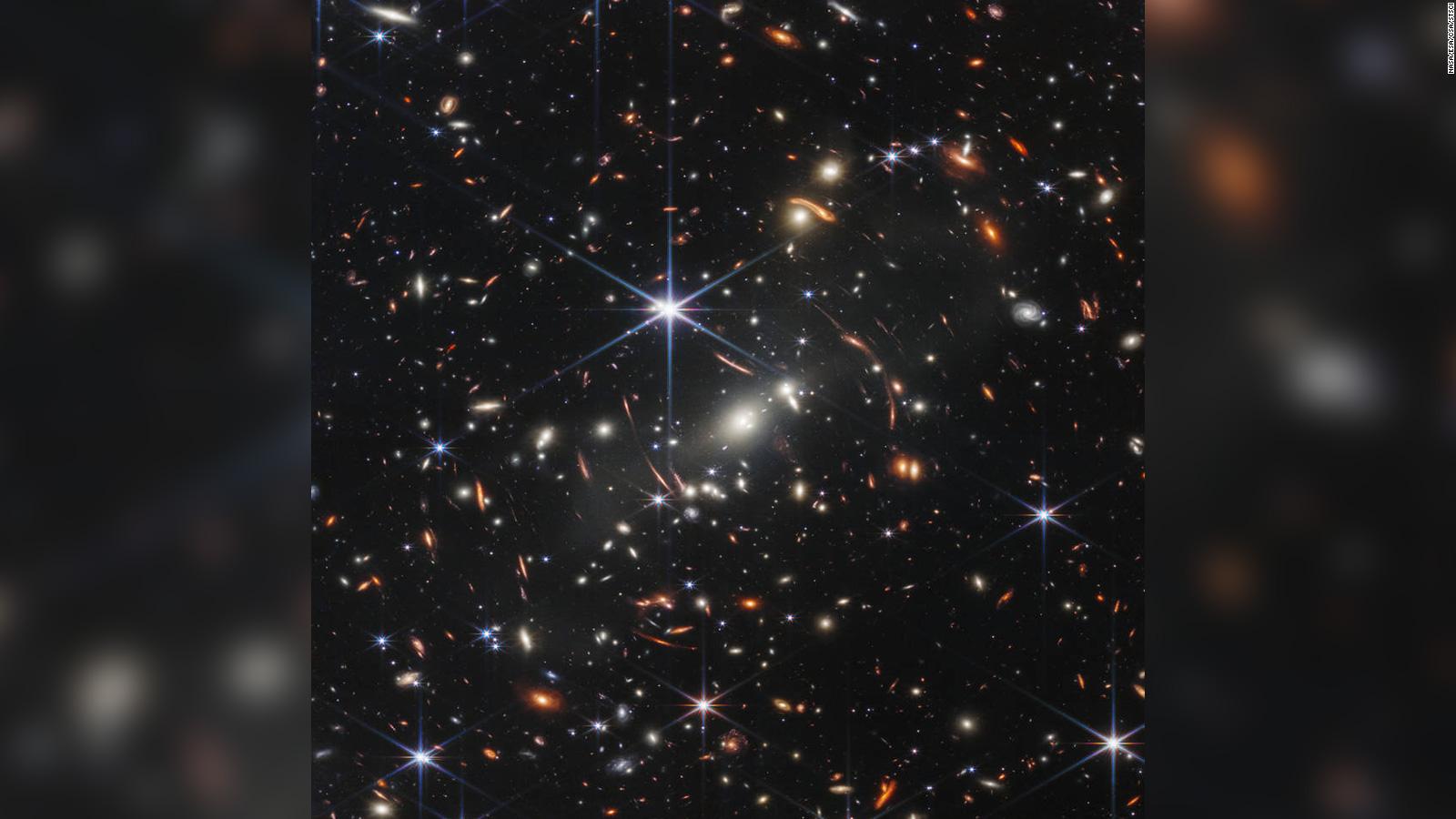NASA advances images from the James Webb Telescope 0:36
(CNN) --
NASA will reveal live Tuesday the first high-resolution, color images from the James Webb Space Telescope, showing the universe as you've never seen it before.
From a stellar nursery where stars are born, to the interactions between galaxies and the unique perspective of an exoplanet: these are just some of the new cosmic images that will be shared.
President Biden Reveals First James Webb Space Telescope Image
After waiting for decades, it is finally time for the world to see the first images of the most powerful space telescope in history: the James Webb.
Development of this space observatory began in 2004. And, after years of delays, the telescope and its huge golden mirror were finally launched on December 25.
The "deepest image of our universe" ever taken by the Webb telescope will be revealed in July
The images are worth the wait: they will forever change the way we see the universe.
Bill Nelson, the administrator of NASA, wrote that Webb will give humanity a new view of space and fundamentally alter our understanding of the universe.
"These images show the power of Webb in searching for signs of life and habitability on other worlds. Its extreme sensitivity will help scientists understand some of the big questions about how and why stars form. It will also bring clarity to stars and galaxies in a way we've never seen before. From star formation to devouring black holes, this telescope will reveal all this and more," he said.
The worlds that NASA's Webb Telescope will open
This Monday, President Joe Biden revealed one of the first images of Webb.
It is "the deepest and sharpest infrared image of the distant universe to date," according to NASA.
The rest of the high-resolution color images made their debut on Tuesday.
advertising
NASA's telescope can investigate the mysteries of the universe by observing them through infrared light, which is invisible to the human eye.
Webb will observe the atmospheres of exoplanets, some of which are potentially habitable.
He might also uncover clues in the ongoing search for life outside of Earth.
Webb telescope's sharp views of the universe will change astronomy
The observatory will also have glimpses of every phase of cosmic history, including the first afterglows after the Big Bang that created our universe and the formation of the galaxies, stars and planets that make it up today.
Now Webb is ready to help us understand the origins of the universe.
As well as to begin to answer key questions about our existence, for example where we come from and if we are alone in the cosmos.
The first image that Biden revealed
The first image, revealed Monday, shows SMACS 0723, where a massive group of galaxy clusters works like a magnifying glass for objects behind them.
Called gravitational lensing, this created Webb's first deep-field glimpse of incredibly old and faint galaxies.
Some of these distant galaxies and star clusters have never been seen before.
The galaxy cluster is shown as it appeared 4.6 billion years ago.
The image, taken by Webb's near-infrared camera, is made up of pictures taken in different wavelengths of light over a total of 12.5 hours.
Deep field observations are extended observations of regions of the sky that can reveal faint objects.
Webb's other main targets for the release of the first images include the Carina Nebula, WASP-96b, the South Ring Nebula and Stephan's Quintet.
Located 7,600 light-years away, the Carina Nebula is a stellar nursery, where stars are born.
It is one of the largest and brightest nebulae in the sky and hosts stars much more massive than our Sun.
The Webb telescope's observation of the gas giant planet WASP-96b will be the first full-color spectrum of an exoplanet.
The spectrum will include different wavelengths of light that could reveal new information about the planet, such as whether it has an atmosphere.
Discovered in 2014, WASP-96b is located 1,150 light-years from Earth.
It is half the mass of Jupiter and completes one orbit around its star every 3.4 days.
The South Ring Nebula, also called the "Eight Bursts," is 2,000 light-years distant from Earth.
This large planetary nebula includes an expanding cloud of gas around a dying star.
The space telescope view of Stephan's Quintet will reveal the way galaxies interact with each other.
This compact group of galaxies, first discovered in 1787, lies 290 million light-years away in the constellation Pegasus.
Four of the five galaxies in the group "are locked in a cosmic dance of repeated close encounters," according to a NASA statement.
The targets were selected by an international committee, including members of NASA, the European Space Agency, the Canadian Space Agency and the Space Telescope Science Institute in Baltimore.
The mission, initially planned to last 10 years, has enough excess fuel capacity to operate for 20 years, according to NASA Deputy Administrator Pam Melroy.
These will be just the first of many images to come from Webb over the next two decades.
Which promises to fundamentally alter the way we understand the cosmos.
NASAWebb TelescopeUniverse

